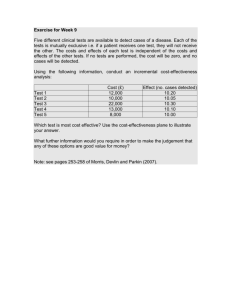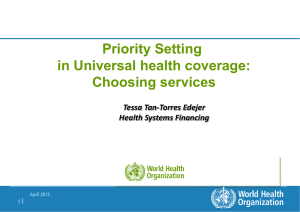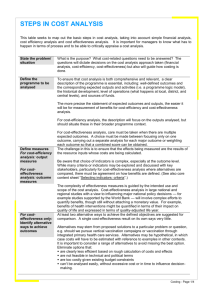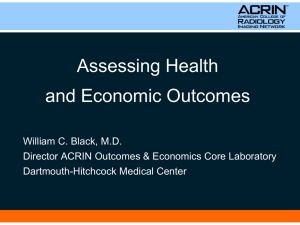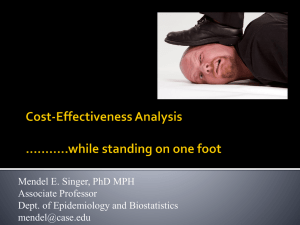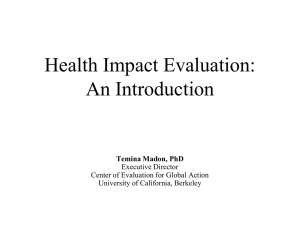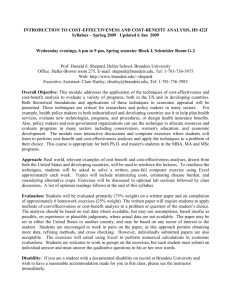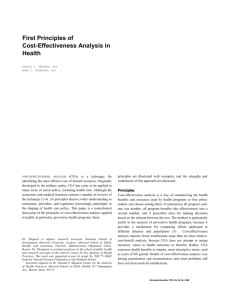Cost-effectiveness plane
advertisement
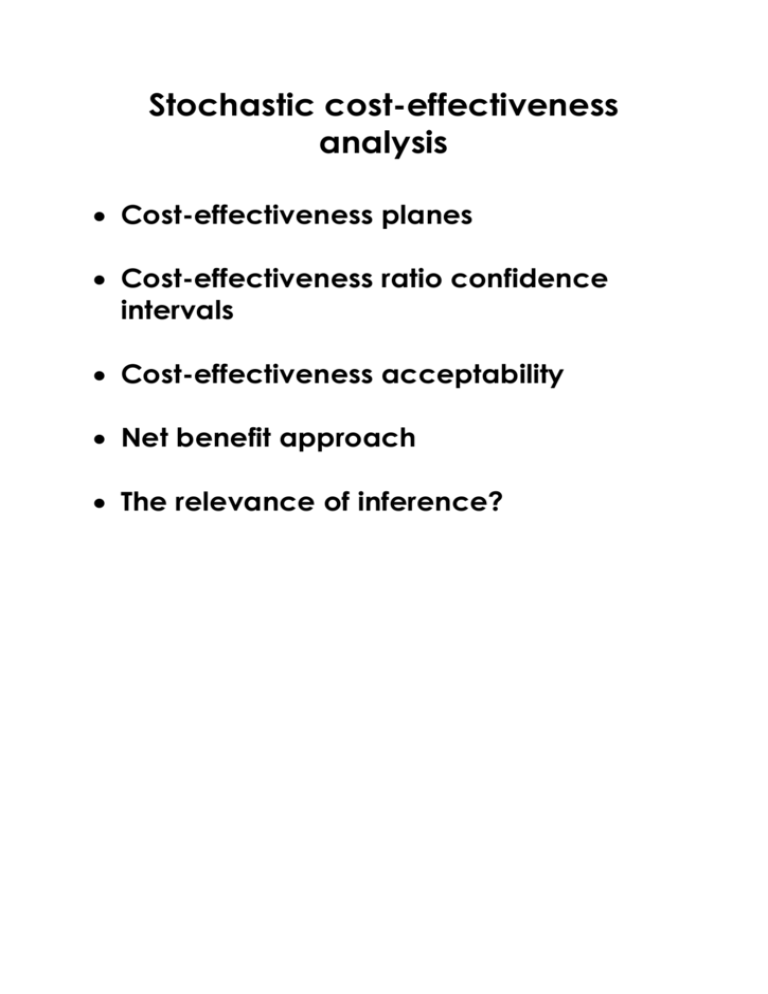
Stochastic cost-effectiveness analysis Cost-effectiveness planes Cost-effectiveness ratio confidence intervals Cost-effectiveness acceptability Net benefit approach The relevance of inference? (-) Difference in costs (+) Cost-effectiveness plane Treatment dominated Costeffectiveness ratio Costeffectiveness ratio Treatment dominates (-) Difference in effects (+) Cost-effectiveness plane (-) Difference in costs (+) CER (-) Difference in effects (+) CER = Cost-effectiveness Ratio CER confidence intervals CER confidence intervals Problems Independent cost and effect confidence intervals may give too wide an overall confidence interval The probability distribution of a ratio of two random variables does not have a known distribution The ratio has discontinuities at the boundaries between different quadrants Some solutions The “box” method – separate distributions The “ellipse” method – joint distributions Fieller’s theorem Bootstrapping Cost-effectiveness acceptability Cost-effectiveness decision rule ICER= C/E Compare with “ceiling ratio” = Rc If Rc > C/E, treatment is cost-effective Rc can also be interpreted as the costeffectiveness threshold or the willingness to pay for a unit of health effect Cost-effectiveness acceptability (-) Difference in costs (+) At Rc, treatment unacceptable Treatment never acceptable At Rc, treatment acceptable At Rc, treatment unacceptable Treatment always acceptable At Rc, treatment acceptable (-) Difference in effects (+) Cost-effectiveness acceptability (-) Difference in costs (+) Different thresholds for gains and losses in health Treatment acceptable Treatment acceptable (-) Difference in effects (+) Cost-effectiveness acceptability Calculate the proportion of the distribution (P) which lies below the line defining a particular ceiling ratio (Rc) Cost-effectiveness acceptability Rc1, P1 (-) Difference in costs (+) Rc2, P2 Rc3, P3 (-) Difference in effects (+) Calculate Pi for each level of Rci Cost-effectiveness acceptability Cost-Effectiveness Acceptability Curve (CEAC) Proportion acceptable 1.00 0.50 0.00 £3,000 £15,000 Ceiling ratio £30,000 The Net Benefit Approach ICER= C/E where C is in £ and E is not Net benefit = E - C where C and E are in the same units Rc can be used to convert costs to the same units as effects, or effects to the same units as costs: Monetary net benefit (MNB): MNB = Rc *E - C Health net benefit (HNB): HNB = E - C/Rc The Net Benefit Approach Cost-effectiveness decision rule If Rc > C/E, treatment is cost-effective Net benefits decision rule Monetary net benefit: If Rc *E - C > 0, treatment is cost-effective Health net benefit: If E - C/Rc > 0, treatment is cost-effective Net Monetary Benefit Curve Net Monetary Benefit £30,000 £0 -£30,000 0 £15,000 Ceiling ratio £30,000 The relevance of inference? Inference about CERs may lead to different conclusions than inference about costs and effects Are decisions based on statistical significance perverse? Is quantifying uncertainty useful to decision makers? Expected value of information
